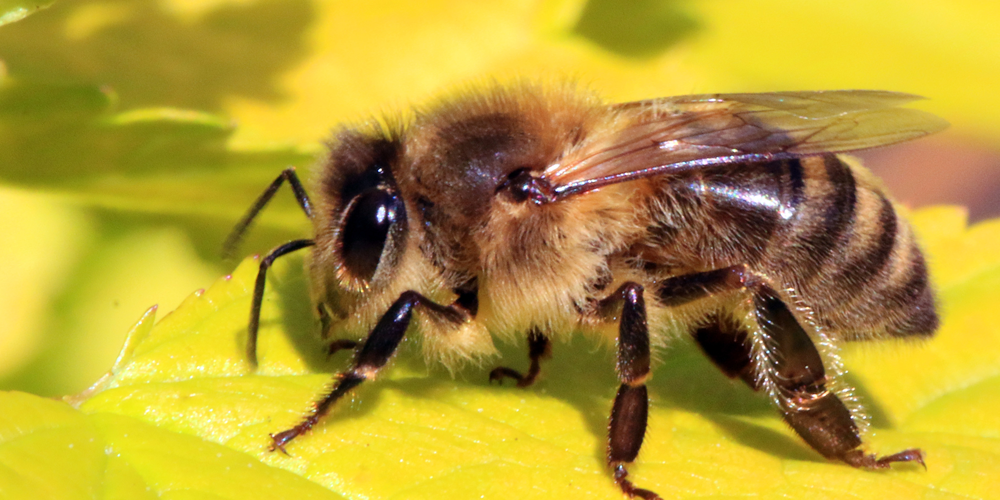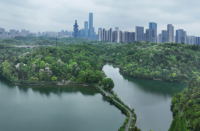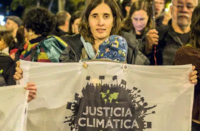Since plants have to mate and produce offspring while rooted to the spot, they have to be pollinated: by wind, water, or animals – most commonly insects. They use a surprising array of tricks to attract pollinators: striking colours, iridescent light effects and enticing scents, to name but a few. Insects, on the other hand, do not seek to pollinate plants: they are looking for food; so plants make sure it’s worth their while. Insects are also remarkably sophisticated in their ability to find, recognise and find their way inside, flowers.
So pollination has evolved as a complex dance between plants and pollinators that is essential for life on earth to continue. The humble bumble-bee has a brain size of approximately 1mm cubed, the size of a pin head. Yet it is able to fly from its home to pollinate over 8 km away and find its way back. Pollination by bees facilitates the production of 75% of global crops, especially nutritionally significant fruits, nuts, and vegetables. Worldwide, pollinator populations have steadily declined, leading to concerns about global food security and highlighting the need to safeguard pollinators for human and ecosystem well-being.
Research on climate change effects on pollinators have focused on feral populations and reported species redistribution, a synchronicity in plant-pollinator relationships, and reduced forage availability. Less emphasis has been placed on climate change impacts on honeybee population dynamics. Recent studies linking weather with managed honeybees have shown correlations between monthly meteorological variables and colony losses. Summer temperatures have been associated with winter mortality and extreme weather exposure has been linked to higher colony losses.
Years with warmer and drier conditions especially during the winter were correlated with higher overwinter colony losses. Warmer winters also can cause brood rearing to start earlier in colonies. I think we can say by comparison with our youths that there is a serious decline in our biodiversity across these islands and further afield. I can look into my garden and see the lack of flies, beetles and bees around.
In Nepal, 50% of children are stunted in their growth because of the use of pesticides, climate change, and habitat loss all resulting from lack of pollination. This is based on only one survey. Imagine what is happening across the globe!
In the last 11,700 years, the earth’s climate has been relatively stable. All of the great human civilizations developed during this period, when you had a climate warm enough for agriculture, when ice was restricted to certain limited parts of Earth, and so on. We have had variations, but small ones. Then, in the past century—and really just in the past forty or fifty years—the amount of carbon dioxide in the atmosphere has soared.
It is getting close to double what it was for that long period. We can already see the consequences of this. The climate is shifting in real time, much, much faster than has ever happened by natural processes. Changes that took hundreds of thousands or millions of years in the past are now occurring in years or decades.
Part of capitalist ideology maintains that no matter what the problem, there is a technical fix. Because if there is no technical fix, then there is something wrong with the society, and the defenders of the society do not want to believe or acknowledge this. Even if tomorrow, we invented a carbon capture technology that would remove CO2 from the atmosphere effectively and quickly, it would still probably be centuries before it had any significant effect. Today, a very small number of carbon capture projects are removing carbon dioxide from the atmosphere, and the amount collected is the equivalent of taking a few hundred automobiles off the roads. It is nothing compared with the size of the problem.
Carbon dioxide has been described as our thermostat: turn it up a little bit, it gets hotter; turn it down a little bit, it gets colder. We can look at the record of carbon dioxide, which is preserved mainly in the ice in Antarctica and Greenland, and we can show how the earth’s climate has changed closely in line with the variation in the amount of carbon dioxide.
The range of changes was very small. During the last Ice Age, which ended twelve thousand years ago—a very short time in Earth history—the amount of carbon dioxide in the atmosphere was not much less than it has been until recently. It only took a small shift for the transition to the Holocene to occur.
We need a to be revolutionary in our attitude, by that I mean a change of the basics of society. It may frighten people, but it will at least warn them that there is something to be frightened about.






